I am trying to plot more than 10k data points, where I want to plot a data properties versus Timestamp. But on the x-axis the timestamps are overlapping and not visible.
How can I reduce the amount of labels on the x-axis, so that they are legible?
import pandas as pd
import seaborn as sns
import numpy as np
import matplotlib.pyplot as plt
sns.set_style("whitegrid")
data = pd.read_csv('0912Testday4.csv',header=2)
for i in data.columns:
if i!='TIMESTAMP':
sns.lineplot(x="TIMESTAMP",y=i,data = data)
plt.title(f"{i} vs TIMESTAMP")
plt.show()
Example plot demonstrating the problem:

Update:TIMESTAMP was in string format by converting into datatime format it resolves the problem.
data['TIMESTAMP'] = pd.to_datetime(data['TIMESTAMP'])